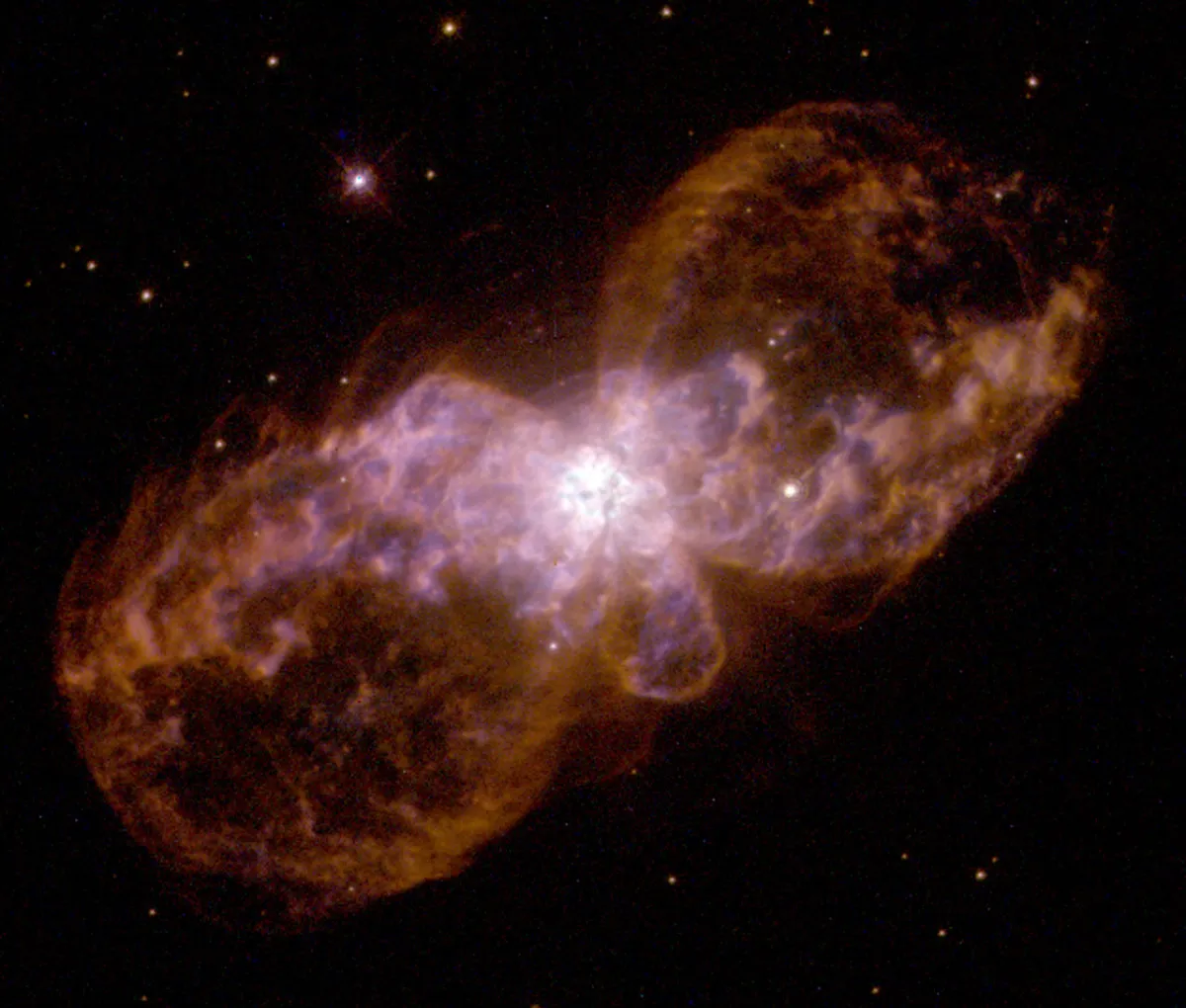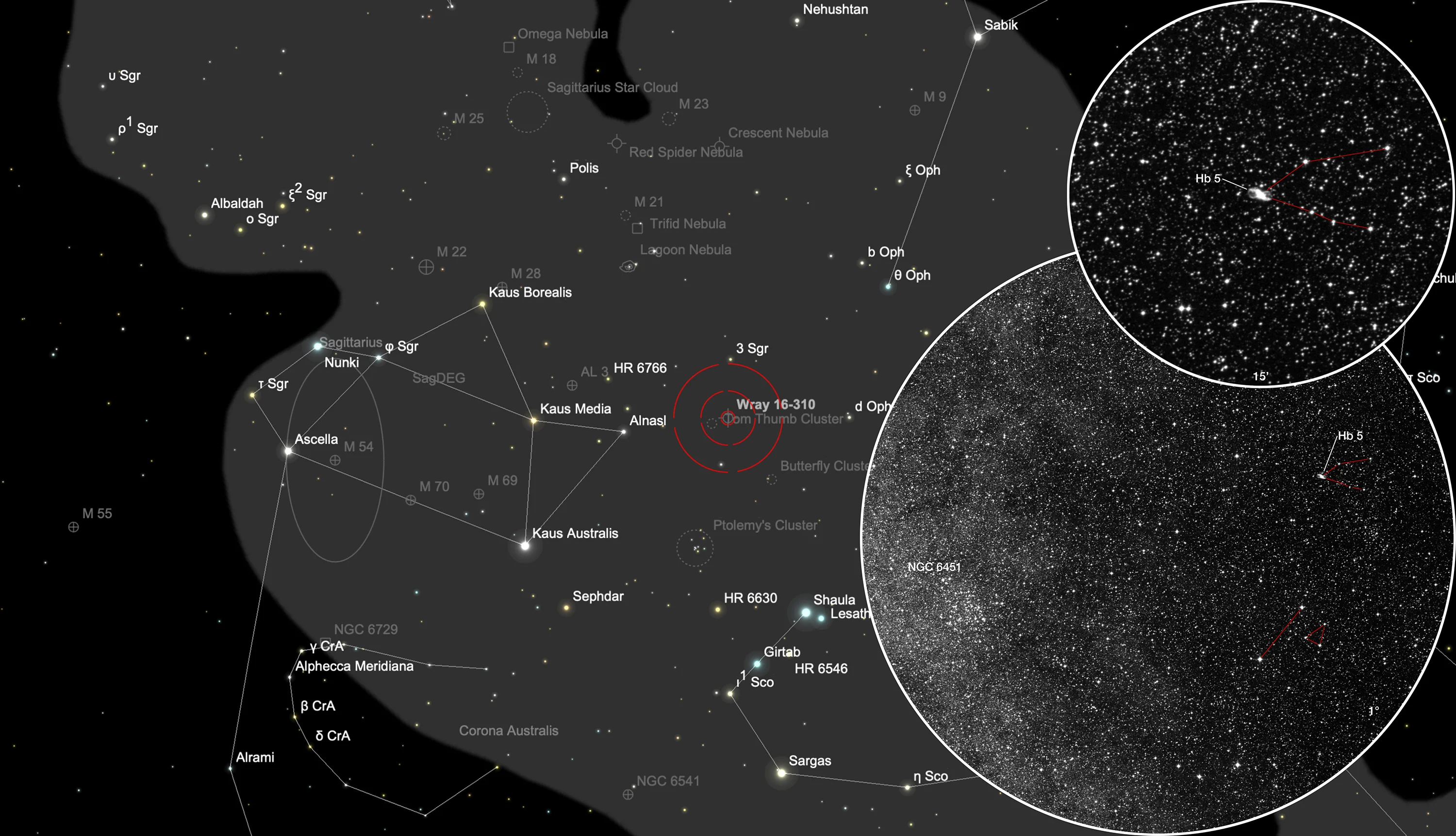Planetary Nebula Hubble 5

History
This planetary nebula was discovered by the famous astronomer Edwin Hubble in 1921 on photo plates taken with a 10-inch Cooke Astrographic Lens, 45-inch focus, with objective prisms attached, and have been checked by observations with the large reflectors on Mount Wilson Observatory. [416]
Physical Properties
Hubble 5 is a bipolar planetary nebula. The heat generated by fast winds causes each of the lobes to expand. A dense core is surrounded by large filamentary loops that resemble a rosette. These filamentary loops seem to emerge from punctured regions of the core in random directions. There is also a well-defined filamentary loop to the south of the core. The nebula descended from a relatively massive progenitor star with a mass more than four times that of our Sun. [621] The nebula is similar in structure to NGC 2440. Apparent magnitudes: B 10.5; V 10.78. Distance circa 1.7 kpc. [145]
| Designations | PN G359.3-00.9: Hb 5, PK 359-00.1, ARO 389, Bl E, ESO 455-42, He 2- 286, VV 116, VV' 252, Wray 16- 310 |
| Right Ascension (J2000.0) | 17h 47m 57s |
| Declination (J2000.0) | -29° 59' 53" |
| Dimensions | 15." (optical), > 13." (radio) |
| Distance | 2.0 kpc |
| Radial Velocity | -28.0 ± 5.0 km/s |
| C-Star Designations | AG82 264, CD -29 13998, HD 316340 |
| C-Star Magnitude | B: 18.6 |
| Discoverer | HUBBLE 1921 |
Finder Chart
The planetary nebula Hubble 5 is located in the constellations Sagittarius at a declination of -30°. Start at the open cluster NGC 6451, then hop west to the two stars with the small triangle and from there to the north with the V-shaped asterism. The best observation time is from February to November. On 19 June it is in opposition to the Sun and crosses the meridian at local midnight.
Visual Observation
400 mm Aperture: Still in astronomical twilight, Hubble 5 was already low above the mountain range of the Gantrisch. In the 21 mm Tele Vue Ethos (85x), the position of the PN could be clearly determined from the surrounding stars and was already visible without a filter as an elongated fuzz. Unfortunately, a few minutes later the PN was lost and could not be found again. Maybe due to the proximity of the horizon. — 400 mm f/4.5 Taurus Dobsonian, Gurnigel, 19. 8. 2023, Bernd Nies
500 mm Aperture: After a long search and with a new star chart, I finally found it again. In the 27 mm Panoptic eyepiece (87x), the planetary nebula is visible as an elongated, diffuse spot when viewed indirectly. At higher magnification (7 mm Nagler, 336x), you can even make out an arm, but only if you look just past it. — 20" f/4.7 Ursus Dobson, Astrofarm Tivoli, Namibia, 11. 9. 2023, Bernd Nies
